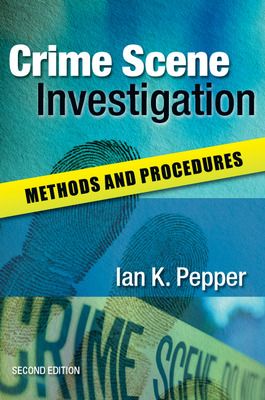Crime Scene Investigation: Methods and Procedures
Receive via shipping:
- Colour, print bound version of the complete text
The history and contemporary structure of the police, scientific services and crime scene investigation in the United Kingdom
Approaching the crime scene, packaging the evidence and the documentation required
The basics of crime scene photography
Trace evidence: Fibres, glass, hairs, paint and soil
Impressions: Footwear marks, instrument marks, glove marks and tyres
Deoxyribonucleic acid (DNA) and body fluids
Fingerprints
The investigation of a fire scene
Firearms
Terrorism, mass murder and disaster (major incidents)
The leadership and management of the forensic examination of a major crime scene
Other sources of evidence for the crime scene investigator
Health and safety at a crime scene
The Criminal Law Courts across the United Kingdom
Organizations related to crime scene investigation
Answers to questions
References
Index
Timothy G. ShilstonChief Superintendent, Northumbria Police, UK
Forensic evidence is dynamic in its context and continues to be highly significant in the detection and prosecution of crime. This means that the knowledge, skill and ability of the person who examines the scene of the crime - the Crime Scene Investigator (CSI) - must be thorough and up to date.
The second edition of this book guides trainee and newly appointed CSIs through the methods and procedures for the accurate recording and recovery of evidence from the scene of a crime. This step-by-step handbook has been thoroughly updated and includes features such as:
- Photographs of the recording, recovery and comparison of evidence
- Detailed drawings of evidence, organizational structures and procedures
- Checklists of roles, equipment and activities required at a crime scene
- Self-assessment questions
Crime Scene Investigation is essential reading for all students - undergraduate or FE - with an interest in forensic law enforcement, particularly those wishing to become Crime Scene Investigators. It is also a handy reference for trainee and professional forensic practitioners.

